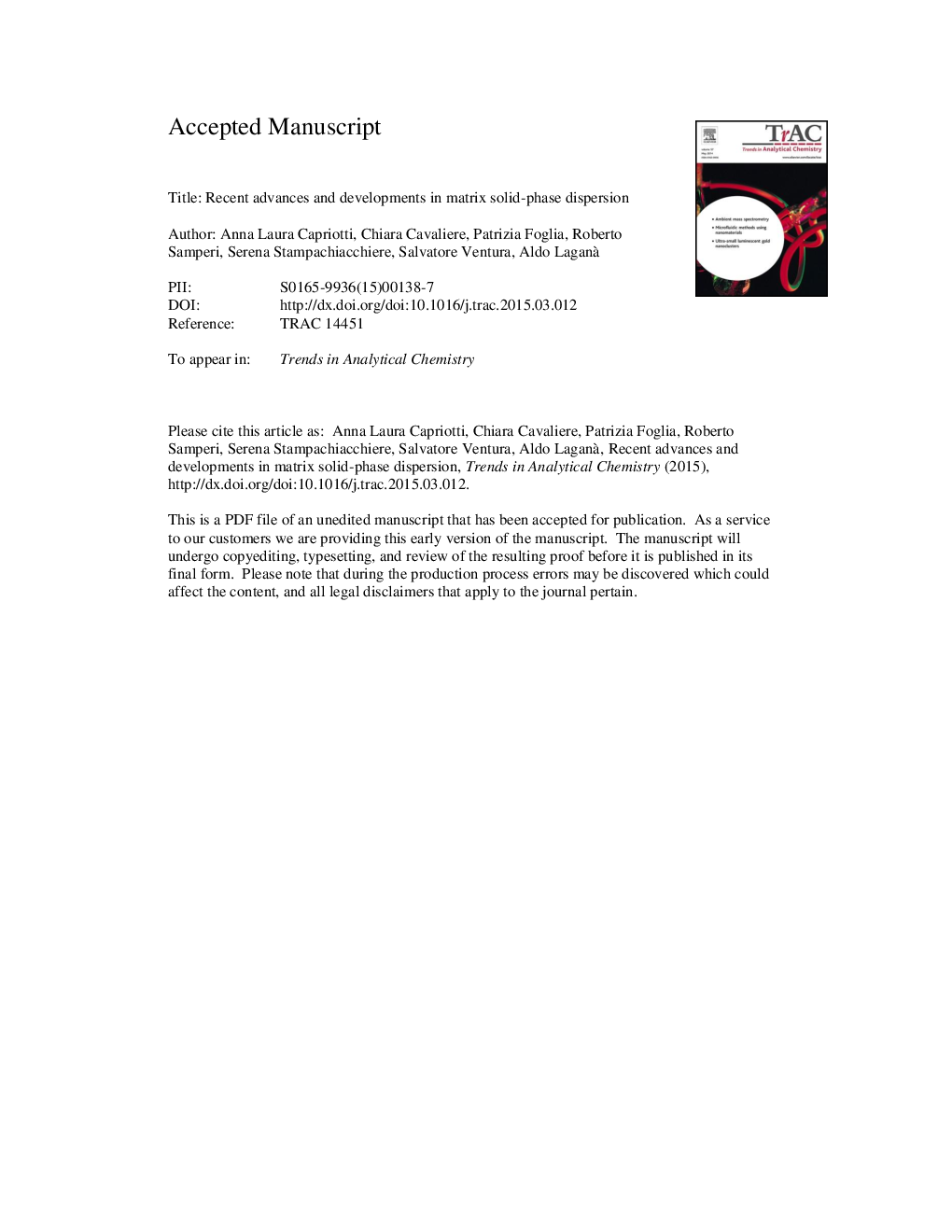| Article ID | Journal | Published Year | Pages | File Type |
|---|---|---|---|---|
| 7689324 | TrAC Trends in Analytical Chemistry | 2015 | 14 Pages |
Abstract
Matrix solid-phase dispersion (MSPD) is a sample-preparation process first introduced in 1989 for the extraction of drug residues from animal tissue. The feasibility and the versatility of MSPD mean it is still widely employed and applicable to a large variety of analytes and samples. The research papers reporting the development of analytical methods with a MSPD-based sample preparation are novel mainly by employing innovative or unusual materials as dispersants and/or the mode of analyte elution. This review gives an update on MSPD from the literature in the period 2012-October 2014, focusing attention on improvements and the outlook for the technique.
Keywords
PCBFPDHalogenated flame retardantFLDDLLMEMSPDWCXSBSEQuEChERSECDACNPBDEPSAMWCNTMEKCOCPOH-PBDEMeO-PBDEMIPQuick, Easy, Cheap, Effective, Rugged, and SafeSPMEHFRPAHNCILOQDispersive liquid-liquid microextractionOPPElectron-capture detectorFlame-ionization detectorOrganochlorine pesticideSample preparationExtractionAcetonitrileCapillary electrophoresissolid-phase microextractionFIDPolybrominated diphenyl etherOrganophosphorus pesticideSorbentUltrasound-assistedNormal phasereversed phasefluorescence detectorFluoroquinoloneMatrix solid-phase dispersionIonic liquidlimit of quantificationStir-bar sorptive extractionMIMMulti-walled carbon nanotubePolycyclic aromatic hydrocarbonClean-uppolychlorobiphenylMolecularly-imprinted polymerMicellar electrokinetic chromatographyNegative chemical ionization
Related Topics
Physical Sciences and Engineering
Chemistry
Analytical Chemistry
Authors
Anna Laura Capriotti, Chiara Cavaliere, Patrizia Foglia, Roberto Samperi, Serena Stampachiacchiere, Salvatore Ventura, Aldo Laganà ,
